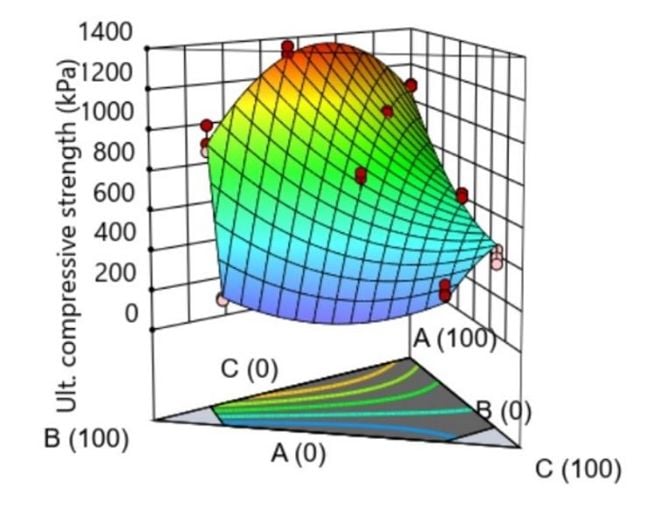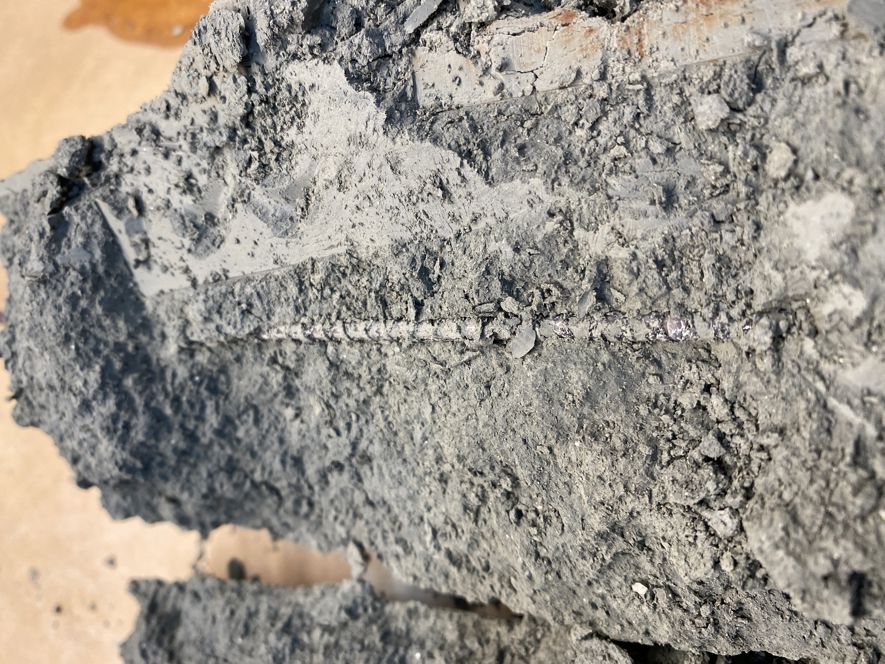Can soil improvement become sustainable?
Soil improvement currently has a significant climate impact due to the substantial consumption of cement and lime products. Recent efforts have improved the situation, but there is still much to be done to make the method sustainable. Is this possible, and how can it be achieved?

Ongoing ground improvement in practice.
A significant challenge
Construction and transportation projects often require the improvement of areas with soft soil. This applies to regions with soft clay or quick clay where improving strength and deformation properties can prevent extensive landslides and thus enable project realization.
Deep stabilization - the most common method
The method most used today is deep stabilization, also known as lime-cement piles or columns, as historically binders of lime and cement have been used to stabilize the ground. The method requires a drilling rig that inserts a mixing tool to blend the binder with the soil underneath, usually clay. Over time, a pile or column of soil stabilized with cement and lime is formed.
Lime and cement contribute significantly to the carbon footprint
One of the significant environmental challenges in the construction industry is precisely the use of lime and cement. These binders have a carbon footprint ranging from 600 to 1000 kg CO2 per kg of binder.
Although the amount of binder used is usually relatively small - typically between 50 and 120 kilograms per cubic meter of clay compared to 300-400 kilograms of cement per cubic meter of concrete - the total amount of binder becomes significant in a soil improvement project since large volumes of clay typically need to be stabilized.
As it is common to stabilize 20 to 40 percent of the clay, often to depths around 25 meters, the method leaves a substantial carbon footprint.
Recent advancements
Fortunately, some progress has been made in recent years. Cement and lime manufacturers have replaced parts of the cement and lime components with byproducts.
Additionally, the Innovation Partnership "KlimaGrunn" has developed new technology and methodologies that can contribute to reducing greenhouse gas emissions from ground stabilization.
Also, increased awareness of the carbon footprint has led to more consultants reducing the amount of binder used compensated by increased control and close monitoring of the construction site.
Together, these efforts can halve the carbon footprint compared to traditional ground improvement solutions. However, a significant step remains to make the method sustainable and achieve a nearly net-zero carbon footprint.

The diagram provides strength response and interaction between various alternative binders at a laboratory scale.
What is needed to make deep stabilization sustainable?
Achieving a zero-carbon footprint from lime-cement piles might sound challenging, and it is. It requires new types of binders with even lower carbon footprints, in addition to more knowledge about the properties of the stabilized clay.
Extensive research is currently ongoing in these areas at NTNU in collaboration with NGI, and other partners, with financial support from the Research Council of Norway (RCN). One collaboration activity is the project "SSG – Sustainable Ground" (RCN project number 324486), which aims to understand the composition and chemical reactions of clay particles at the molecular level. This increased knowledge will provide a basis for developing entirely new binders.
Additionally, the project "GOAL – Green sOil stAbiLisation" (RCN project number 328767) tests various industrial byproducts such as bioash, steel slag, recycled paper sludge, and biochar. Moreover, new sensor technologies are being tested to examine the condition of the stabilized soil mass. In GOAL, extensive testing is conducted with biochar, which not only enhances strength but also stores carbon. This carbon sequestration offsets the CO2 emissions from other parts of the process, thus making a sustainable method feasible.

Here we see stabilized clay with a fiber optic cable for temperature measurements.
Several master's theses
The research collaboration between NTNU and NGI in GOAL has led to several master's theses, including:
- Non-destructive sensing, such as distributed fiber optics and seismic measurements, to document properties of the soil stabilized with alternative binders.
- Utilizing large amounts of data through machine learning for optimized use of materials, energy, emissions, and work labor.
This knowledge contributes to further development toward a sustainable solution
All of this forms the basis for implementing results in full-scale field trials with the goal of achieving new knowledge and competence across all groups of stakeholders in the value chains around deep stabilization. With this knowledge, we aim further to develop traditional deep stabilization into a sustainable solution.

Priscilla Paniagua López
Senior Engineer Geotechnics and Natural Hazards priscilla.paniagua@ngi.no+47 948 29 497